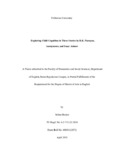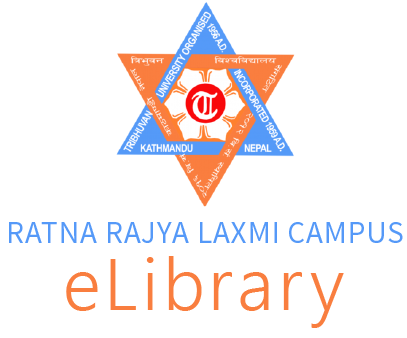Please use this identifier to cite or link to this item:
http://eibrary.ratnarajyalaxmicampus.edu.np:8080/handle/123456789/76| Title: | Exploring Child Cognition in Three Stories by R.K. Narayan, Anonymous, and Isaac Asimov |
| Authors: | Sharma, Bam Dev Baniya, Sabina |
| Keywords: | M.A. English |
| Abstract: | This thesis paper analyses the cognitive development of children especially students studying in a school ranging from age of under puberty. It shows how different characters of all these stories named "Homework" by R.K. Narayan, "Teddy Stoddard" by anonymous and "The Fun They Had" by Isaac Asimov are deprived from cognitive skills through Piaget’s theory of Cognitive Development. It is related to evaluations, judgment, memory, computation and so on. Through this research, it is found that there are cognitive changes especially in the understanding ability of the children during class or study. In "Homework", for example, Swaminathan, can not concentrate on his study due to his father’s strict teaching method. During this time, his own experience is not expressed just because of the lack of cognition such as computation. Likewise, "The Fun They Had" also explains a satirical view towards computerized method which renders children about the book. Even the teacher is robot and they have to do their task on a computer so they are bore in study. According to cognitive development, children aged from a 6 to 10 bring change in the way of thinking about the world through their own senses and experience. But in "Homework", the main character, Teddy, is falsely evaluated through his outfit which leads him towards frustration. His willing to study is judged on the basis of his physical attire which shows the lack of cognitive skills. Thus, cognition is used as a main tool to explain the child psychology in education. The students are expected to come out of the school building to know about the world rather than rotting up for their examinations. Students in this sense are supposed to be engulfed in group discussion or to try to solve the problems themselves. Hence, these stories give a social message regarding the treatment of children. |
| URI: | http://202.45.147.228:8080/handle/123456789/76 |
| Appears in Collections: | Theses |
Files in This Item:
| File | Description | Size | Format | |
|---|---|---|---|---|
| 400381_Baniya_Sabina.pdf | 174.58 kB | Adobe PDF |  View/Open |
Items in DSpace are protected by copyright, with all rights reserved, unless otherwise indicated.
